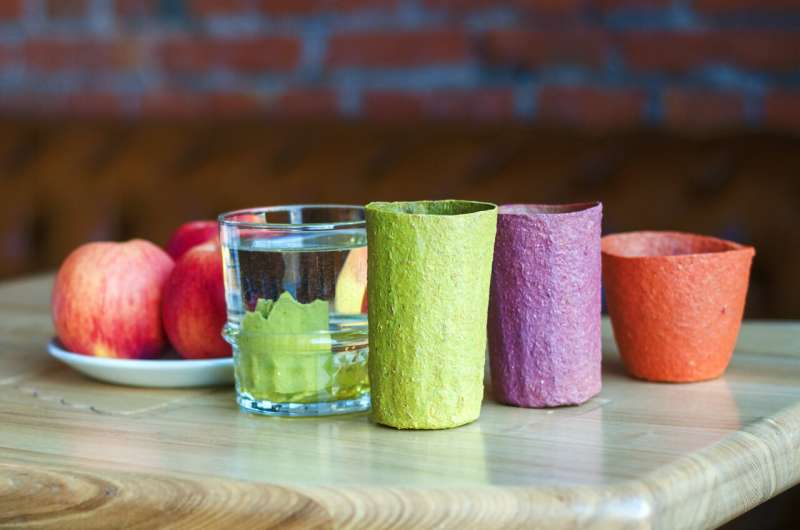Scientists create single-use edible dishware made from apples

A few years ago, biotechnologists from Samara State Technical University took up the development of edible food film, which, according to scientists, could reduce the amount of waste from traditional plastic packaging. The product obtained by Samara scientists is made exclusively from natural ingredients, with no dyes or preservatives. Chemical processes that entail deep chemical changes are not required for production. The technology uses standard processes of the food industry (mixing, concentration, formation of layers of raw materials). First, scientists use fruit or vegetable puree to form a mass and add a plasticizer—a special natural adhesive substance whose composition is kept secret. After that, the finished layer is dried at a temperature not higher than 60 degrees C.
In 2018, the technology for creating edible packaging received three Russian patents and formed the basis of another ambitious project—edible dishware. The experiment began with glasses, since it is the most common type of disposable plastic dishware in the world.
Of course, there are already edible packaging and dishware products made from rice, coffee, avocado seeds, etc. but these products are only conditionally edible, since they contain artificial additives that are not completely absorbed by the human body. An adhesive substance used in the edible film and edible dishware is completely safe and made exclusively from natural plant materials. It is not obtained by chemical synthesis, it does not contain harmful impurities, it is widely used for the production of a number of food products.
In developing food film formulations, scientists experimented with raw materials from various fruits, berries and vegetables, including apples and carrots, currants and chokeberries, plums and strawberries, green beans, pumpkins and blueberries. However the scientists found that apple is more suitable for edible dishware, since it has the best taste and viscoplastic properties. For example, an apple-based cup could withstand boiling water poured into it, and holds liquid for two to three hours.
In the near future, Samara Polytech scientists are planning to bring apple dishware to the market, this they need to automate the process of its manufacture.
"Initially we aimed to create a packaging in which it will be possible to store, to warm up foodstuffs, and then eat it with food. Other packaging in space is inconvenient: it is difficult to dispose it," says project manager Nadezhda Makarova. "Edible dishware made from apples can be useful for those who work in the Arctic or on offshore oil platforms, or make long journeys with a rucksack."
The benefit of using edible packaging and dishware for the environment is obvious.
"Waste plastic dishware is hard to dispose of. For example, not all of them can be used as secondary raw materials,"—explains Dmitrii Bykov, the rector of Samara State Technical University, professor of chemical engineering and industrial ecology. "Nowadays, they make compostable plastics, but I think they are even worse. Plastic turns into dust, and small pieces are dispersed in the environment. It takes a long time to complete their combustion. In addition, particles of plastic fall into the tissues of flora and fauna, including those that are in food chains. Our glasses are made of real biomaterial, therefore they are absolutely non-toxic."
At the end of March, the European Parliament approved a bill aimed at reducing plastic waste. From 2021, it will be forbidden to sell plastic dishware, cotton sticks and drinking straws in the European Union.
More information: Bykov D.E. et al. Influence of Plasticizer Content on Organoleptic, Physico-Chemical and Strength Characteristics of Apple Sauce-Based Edible Film. Food and raw Materials. jfrm.ru/?page=archive&jrn=10&article=1
Bykov D.E., et al. Ecologically Сlean Packaging—Edible Film Based on Apple Puree with the Addition of Sodium Alginate. Ecology and Industry of Russia. www.ecology-kalvis.ru/jour/issue/view/75
Bykov D.E., et al. Combined Edible Films Based on Xanthan Gum. Applied Chemistry and Biotechnology. journals.istu.edu/izvestia_bio … emi/journals/2018/02
Provided by Samara State Technical University


















